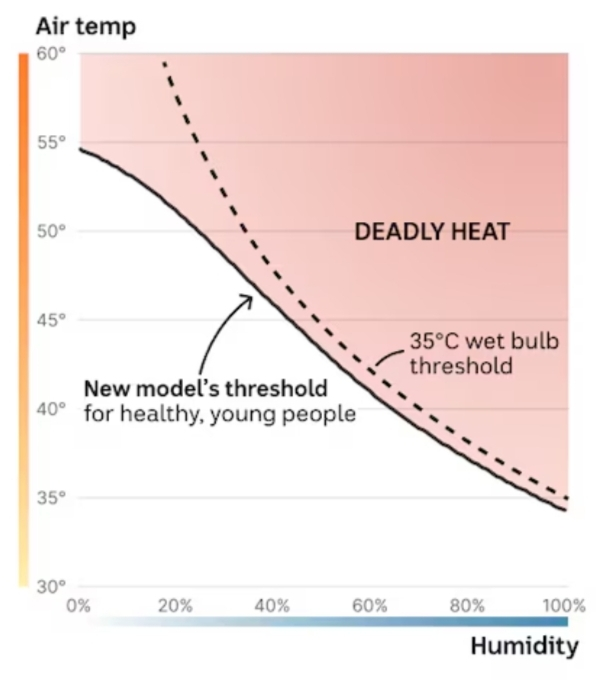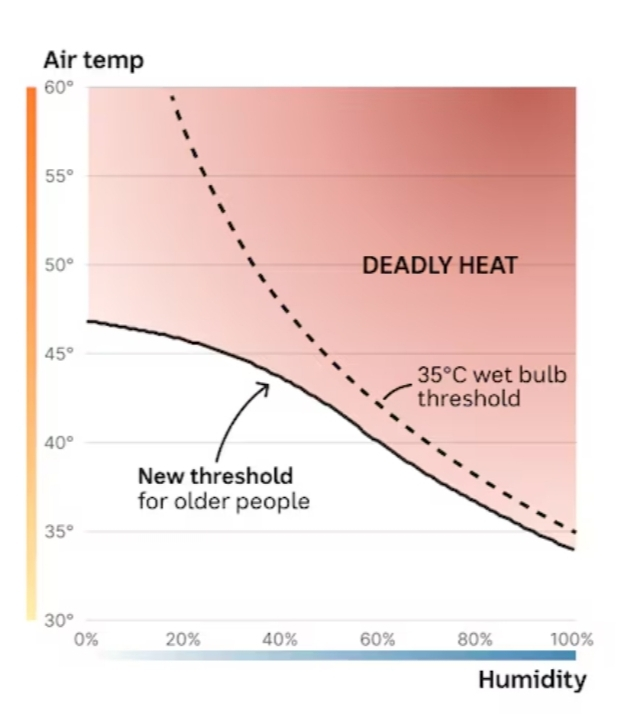The article is about an experiment, where people are exposed to 35°C wet bulb temperatures, but in different settings. Sometimes lower temperatures but higher humidity, sometimes vise versa, but always 35°C wet bulb temperature.
So far the assumption was, that humans can't survive a 35°C wet bulb temperature for longer than 6 hours. And at current warming this is unlikely to be naturally the case within this century.
However the experiment gives hints to believe that humans can't survive at lower wet bulb temperatures either. It looks like with lower temperatures and higher humidity, humans can get very close to that 35°C wet bulb temperature, however people seem to struggle more with higher temperatures and lower humidity.
A possible explanation could be, that while more sweat evaporates in lower humidity, the body has a limit for how much sweat it can produce. And if you keep raising the temperature, that the human body simply can't produce enough sweat to cool itself.
That's pretty much what I took away from the article. They mentioned they experiment with several people, however the article was mainly about on person in the experiment, a 30ish year old, athletic male.
Edit: add some graphs from the article. Sorry for low quality, but as you said, the layout is quite atrocious and on my phone it keeps jumping around on it's own, so I lost patience.



